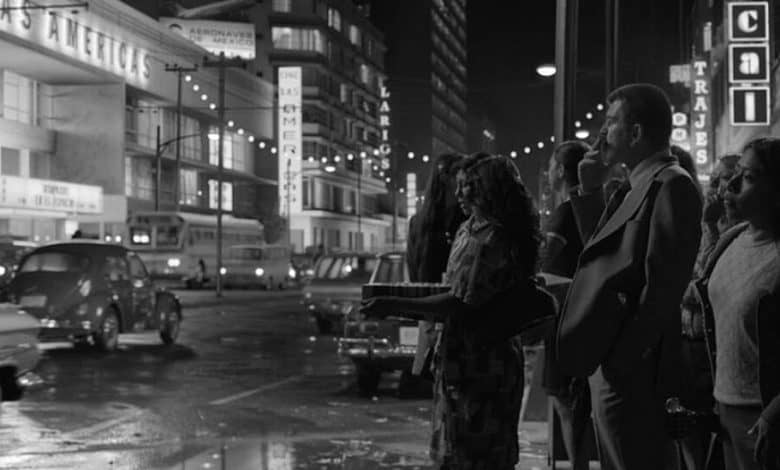It’s a Visual Effects Extravaganza, but There’s Not an Explosion in Sight

A woman crosses a bustling street at night. Cars pass noisily. A streetcar cruises by. Behind her, we see twinkling streetlights, a cinema marquee, towering neon signs. It rained earlier; the roads are still wet. It’s Mexico City in the early 1970s, and it feels vibrantly alive.
This is a scene in “Roma” (2018), Alfonso Cuarón’s naturalistic, semi-autobiographical black-and-white drama based on the life of the housekeeper who helped raise him as a child. It’s also, less obviously, a dazzling showcase of visual effects.
The huge movie theater in the background is entirely CGI. So is the streetcar, and many of the other vehicles, as well as most of the buildings, signs, facades, lights and pedestrians. Even the reflections visible in the puddles on the road were created on a computer. Though it’s been designed to be completely inconspicuous and convincing, Aaron Weintraub, the head of creative operations at the visual effects studio MPC, describes this moment as “one of our flagship shots.”
What comes to mind when you think of visual effects, or VFX? For most people, it’s fantasy and science fiction: aliens in spaceships, superheroes zooming across imaginary lands. And while it’s certainly true that big-budget genre films and summer blockbusters are rife with computer-generated imagery, VFX studios like MPC estimate that about half the work they produce is made to be invisible. For every “Kraven the Hunter” or “Argylle,” there’s a “Ferrari,” “Maestro” or “Killers of the Flower Moon,” movies with sophisticated visual effects that the filmmakers hope you’ll never realize was an effect at all.
“When people talk about VFX, it’s the obvious stuff — the explosions, the laser beams, the science-fiction stuff,” Weintraub said. “But there’s a whole world of work being done that’s transparent to the audience, and no one is supposed to know.” He likened it to the work of film and TV costume designers. What attracts attention and wins Oscars, he said, are “lavish period costumes and fancy superhero suits,” but in fact, “you have a costume designer on every film who makes normal clothes that normal people wear, and no one talks about them.”
